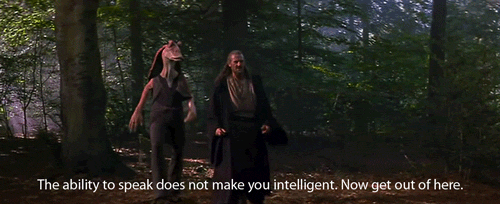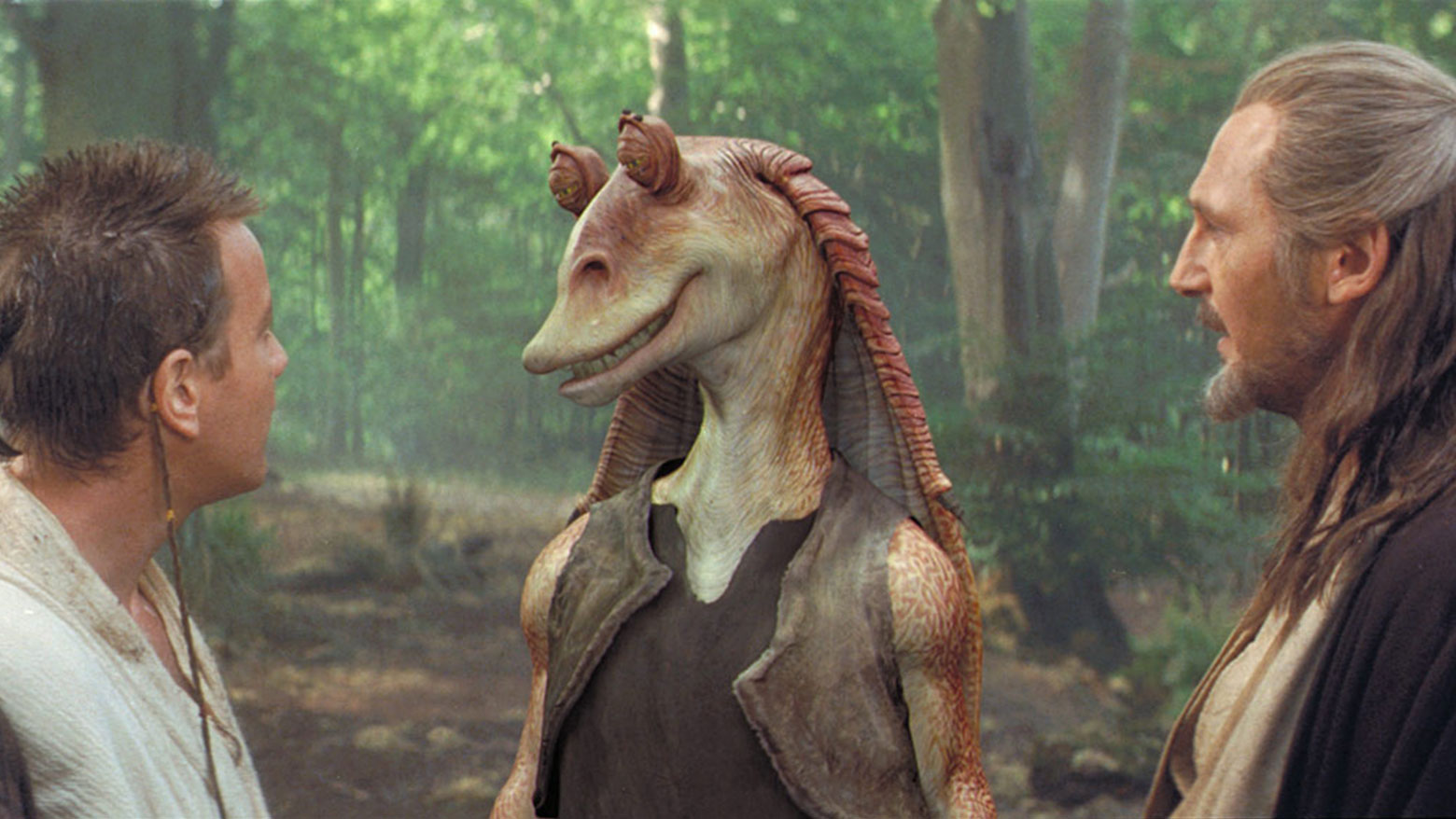I remember seeing Jurassic Park in theaters. The thrill of seeing dinosaurs on the screen was visceral and inspiring. Watching a 16 foot T-Rex muscle its way through cabled fencing and tear apart a car like a hawk eating a mouse- all credit goes to those talented artists whose special effects gave the movie a sense of realism that captivated and terrified an entire generation. Even today, the effects that made the T-Rex and raptors so terrifying are still impressive.
So what happened between then and Star Wars Episode I: The Phantom Menace?
Look at Jar Jar Binks. Look at the way the Gungans walk. The cartoonish features, the not-quite-right lighting, the boneless movements. Most of us were shocked to see our beloved Star Wars movies reduced to these distractingly bad graphics.
How could Hollywood have let this happen? (We’re looking squarely at you, George Lucas.)
Well, here’s the dominant theory. When Jurassic Park came out in 1993, CGI (computer generated imagery) was still a relatively new discipline. The computing power and expertise needed to create CG elements were just developing and therefore pretty darn expensive. Therefore, when CGI was a young industry, it was used sparingly in conjunction with the then-standard staples of animatronics, props, and costume makeup.
Nowadays, the technology for CGI (and a wealth of animators who use it) is everywhere and therefore much cheaper to employ. In fact, high quality traditional effects are expensive by comparison. If you want proof, you can see the rampant use of lower-quality CGI in television across the board, particularly in children’s shows.
In addition to better texture and lighting in graphics, we’ve also seen tremendous work in motion capture. Andy Serkis is a revolutionary figure in cinema. His performance as Gollum in the Lord of the Rings trilogy cemented him as a singular performance artist. People like Serkis are stretching the boundaries of what actors can do without the use of makeup, which is nothing short of amazing.
But CGI still struggles to make the grade when it comes to realism. There’s no doubt that it will eventually be able to create flawlessly realistic characters and creatures, but it’s presently painfully obvious that we aren’t there yet when graphics are placed next to props and people.
It’s the opinion of many of us movie lovers that Jurassic Park aptly demonstrated the key to this dilemma. It seems to be that the marriage of models, puppets, and makeup with the ever-progressing artistry of CGI is what renders the best movie magic.
For a modern-day example, check out one of my favorite shows, The Walking Dead. The combination of practical effects and prudent CGI make for terrifyingly decayed zombies that pass the test of believability.
Hopefully Hollywood will catch on and resurrect this harmonious combination. Hopefully George Lucas will take this idea to heart for Episode 7.





